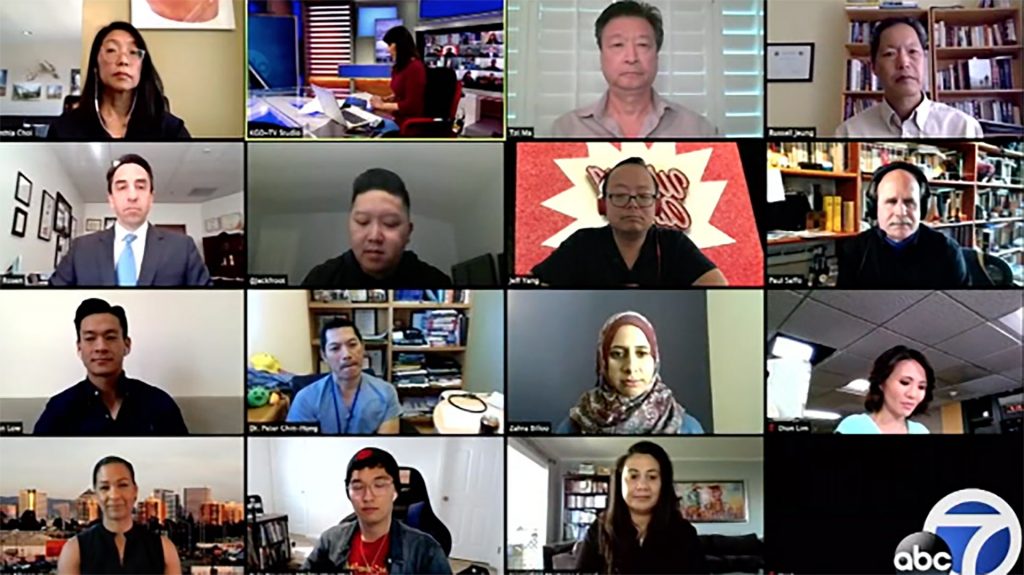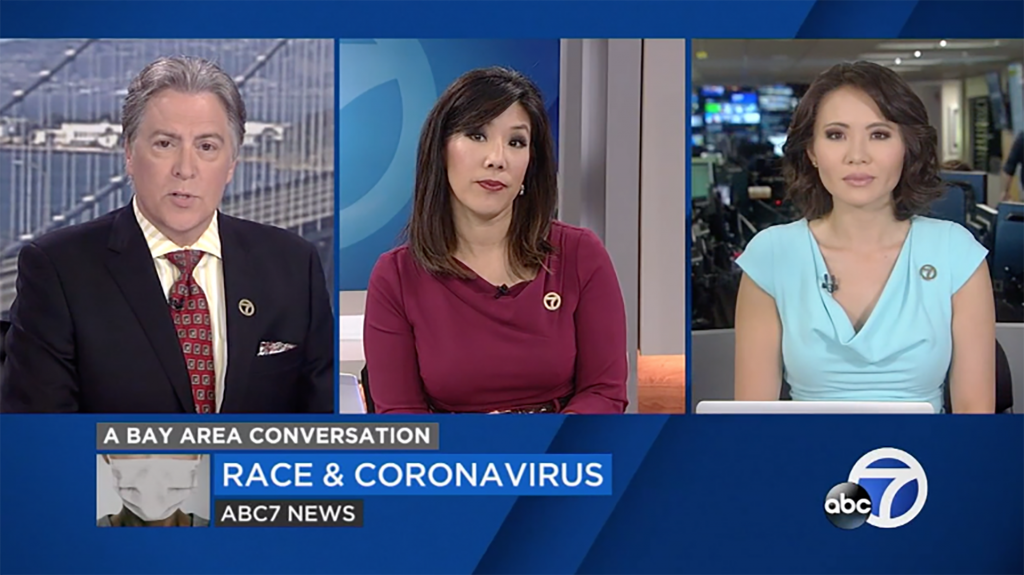The COVID-19 pandemic has brought out the best in many people — and the worst in a few. It has also given local TV newsrooms the opportunity to connect with their communities in innovative ways and to re-think the roles of their most prominent personalities.
For the past year or so, KGO-TV weekend anchor Dion Lim has been reporting regularly on hate crimes against Asian-Americans in the Bay Area. When the coronavirus — dubbed the ‘Chinese virus’ by some, including President Trump — invaded the United States, she saw ugly stories of bigotry and harassment start to spike on social media. “When coronavirus hit, it brought in the xenophobia factor. And it really reached this fever pitch,” Lim says. “And that’s when I said something has got to be done.”
Lim went to her boss, Tom Cibrowski, GM of the ABC-owned station, and asked permission to write an op-ed about the issue for The San Francisco Chronicle. “And he said, ‘Absolutely. This is an important issue that needs to be highlighted. Send it to me when you’re done.’”

Lim’s powerful essay, entitled How the Coronavirus Gave Me Purpose, is a passionate departure from the reserved tone typical of TV anchors. “With each story I reported,” she wrote, “the fire burning in my gut to do more grew stronger. When the coronavirus outbreak began, the flames exploded into anger.” Lim wrote that her voice was one of many from the Asian-American community finally speaking up about hate crimes and bigotry.
It didn’t stop there. After the essay came out on March 20, Lim and her colleague, weekday anchor Kristen Sze, helped convince Cibrowski to try something new. “They have voices in the newsroom, and they’re not afraid to use them,” Cibrowski said of the two journalists. “They’re very much in touch with their own communities. But they’re also in touch with the rest of the Bay Area. They both said ‘Let’s do a town hall. We said, ‘Absolutely.’”

It was an ambitious undertaking, especially given the challenges of just covering the COVID-19 story day to day. But on April 2, KGO turned its Thursday 4 p.m. newscast into an hour-long live special, Race and Coronavirus: A Bay Area Conversation. The producers created clear and useful explainer videos to set up a candid discussion about racism and the coronavirus with thirteen experts, all of them appearing via Zoom: an ethnic smorgasbord of academics, medical professionals, civil rights leaders, social media influencers, the district attorney of Santa Clara County, and artists including the prolific actor Tzi Ma, who’s in the new live-action version of Mulan — synergy, thy name is Disney!
KGO anchors Dan Ashley and Kristen Sze handled the questioning, while Lim reported from the newsroom on real-time audience interactions via social media. “We were really worried about the technology, but honestly, it all played out very well,” Cibrowski says.

Cibrowski says the pandemic has pushed stations to innovate, dropping the everyday business-as-usual “playbook” when confronted with a new set of challenges and responsibilities. “In three weeks time, we were forced by a terrible, terrible crisis to throw out that playbook in almost every newsroom,” he says. “Conversations around race may not be what every newsroom wants to do. But the way local television and local news is developing throughout this crisis, it’s become a community gathering place. There’s obviously all the breaking news, but we have to reach beyond the breaking news to try to plant our flag on helping the community, helping the conversation.” (In the days following our interview, “conversations around race” exploded nationally amidst alarming statistics about COVID-19’s alarmingly disproportionate impact on black and Hispanic communities.)
Dion Lim’s emerging role in the Bay Area conversation as an advocate for her own community on social media and on television is new territory for most anchors. Lim says she was trained to strive for “gravitas” by “being the most badass reporter and anchor who could do everything under the sun, knew my stuff left and right, backwards and forwards.” Now, on top of that worthy aspiration, “I’ve discovered in my own way that if people can share and realize that I’m just like them, and I have the same concerns and the same empathy that they do, I think it makes you better at your job.”
Tom Cibrowki agrees. “We want to see and hear [our journalists’] feelings at times. In a modern world of multiple platforms, authenticity is what matters most,” he says. But Lim heard from another Asian-American anchor in a top-five market — a woman she’d never talked to before — who wondered why she couldn’t have the kind of freedom that Lim was given to write her op-ed or participate in the town meeting.
“I’ve had to defend it to friends and to other journalists as well. But nowadays, if you want to be a talking head, yeah, that’s fine,” Lim says. “But if people can have that sense of connection, I think that’s the gravitas.”
I suspect an evolving definition of the role of anchors and reporters is just one of the many issues broadcast journalists and newsroom leaders will be dealing with as a “new normal” begins to take shape in the wake of COVID-19. “I don’t think anybody thinks we’re ever going to go back to the status quo,” says Cibrowski. “God forbid an earthquake hits: the damage happens, and there’s rebuilding, and at some point you get back to normal. You just do. This is not that case. It’s something much bigger. And I think everybody in the news business knows that.”
